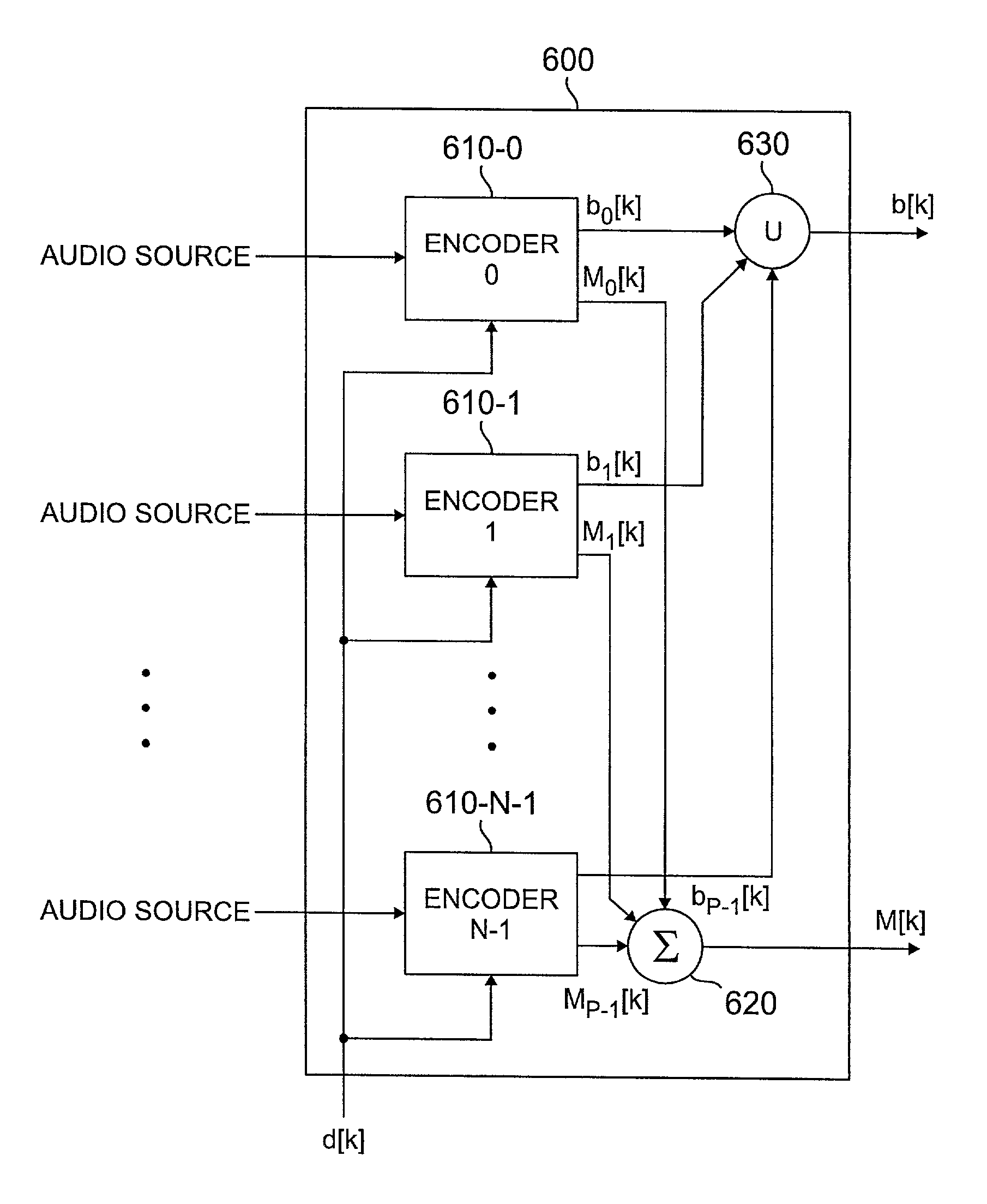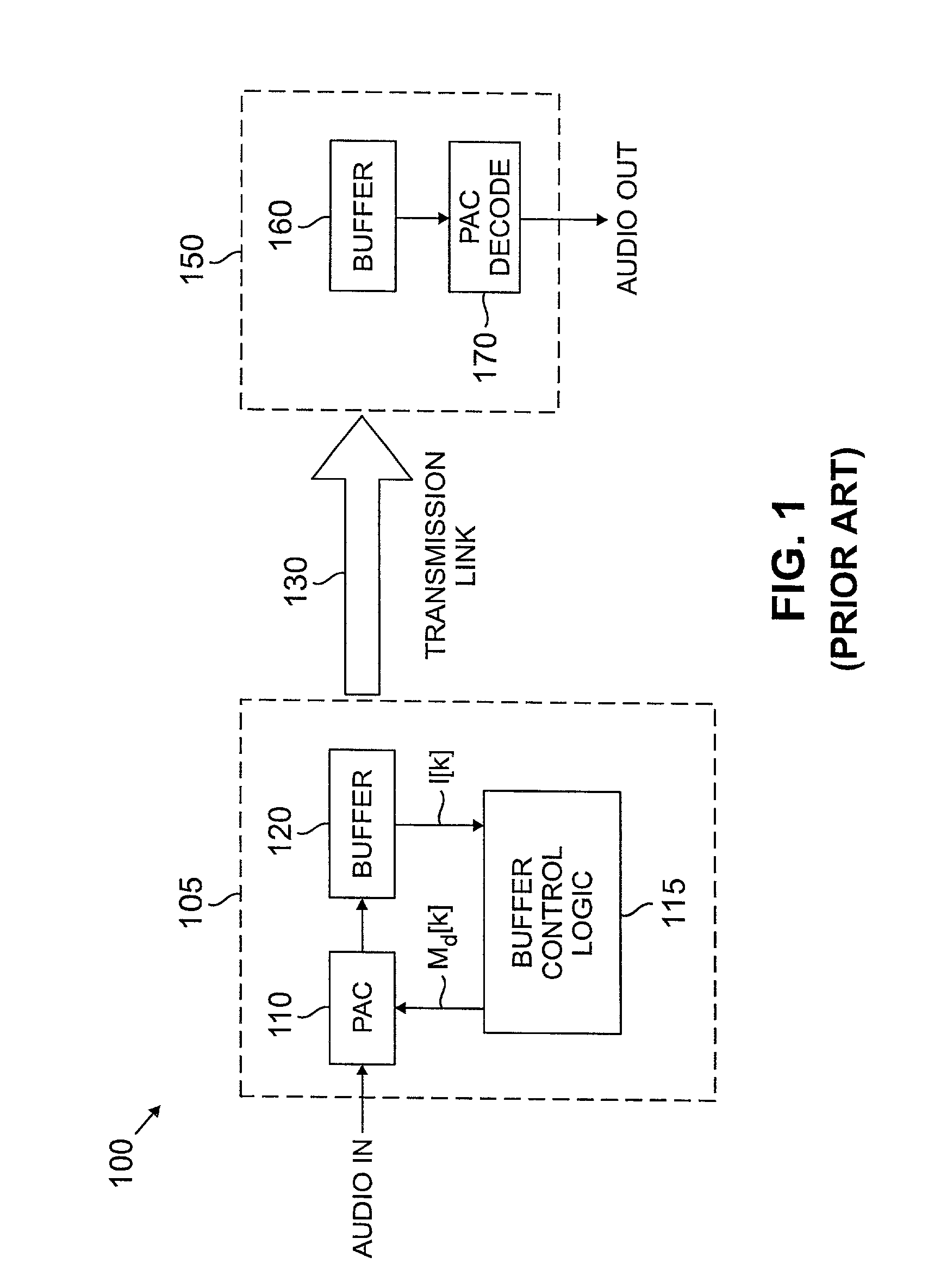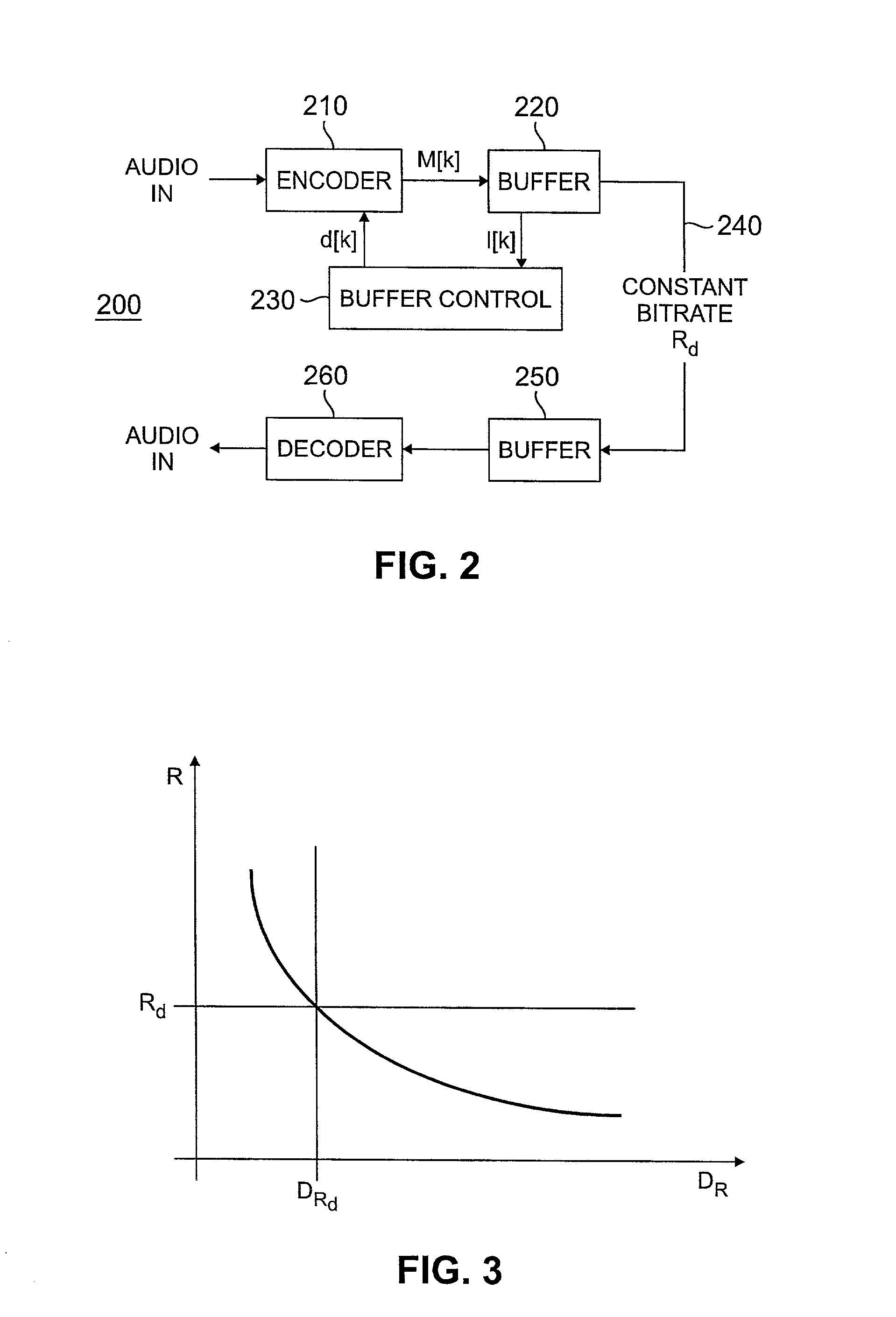Distortion-based method and apparatus for buffer control in a communication system
a communication system and buffer control technology, applied in the field of distortion-based buffer control techniques in digital communication systems, can solve the problems of variable transmission delay, limited end-to-end delay desired by the cost of the decoder, and variable perceptual audio coder, so as to achieve constant distortion level, consistent perceptual quality, and variation of perceived distortion over time
- Summary
- Abstract
- Description
- Claims
- Application Information
AI Technical Summary
Benefits of technology
Problems solved by technology
Method used
Image
Examples
Embodiment Construction
[0019]FIG. 2 illustrates a communication system 200 in accordance with the present invention. As shown in FIG. 2, the communication system 200 has an audio encoder 210 and decoder 260 with a buffered bit stream for a constant bit rate transmission of the bits. The buffered bit stream is achieved using an encoder buffer 220 and a decoder buffer 250. As shown in FIG. 2, the M[k] bits of the encoded frame, at the time of each frame k, are put into the FIFO buffer 220 while Rd bits are removed from the FIFO buffer 220 by the constant bit rate transmission channel 240. The number of data bits in the encoder buffer 220 can be expressed iteratively as:
l[k]=l[k−1]+M[k]−Rd, (1)
with an initial buffer level of l[0] equal to ld bits. A buffer control element 230 monitors the buffer level l[k] and influences the encoding process to ensure that the buffer 220 does not overflow. Buffer underflow can be easily prevented by padding additional (non-used) bits to the frame when underflow would occur....
PUM
 Login to View More
Login to View More Abstract
Description
Claims
Application Information
 Login to View More
Login to View More - R&D
- Intellectual Property
- Life Sciences
- Materials
- Tech Scout
- Unparalleled Data Quality
- Higher Quality Content
- 60% Fewer Hallucinations
Browse by: Latest US Patents, China's latest patents, Technical Efficacy Thesaurus, Application Domain, Technology Topic, Popular Technical Reports.
© 2025 PatSnap. All rights reserved.Legal|Privacy policy|Modern Slavery Act Transparency Statement|Sitemap|About US| Contact US: help@patsnap.com



